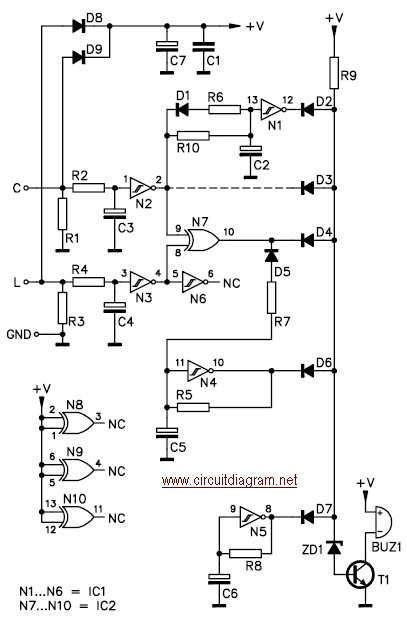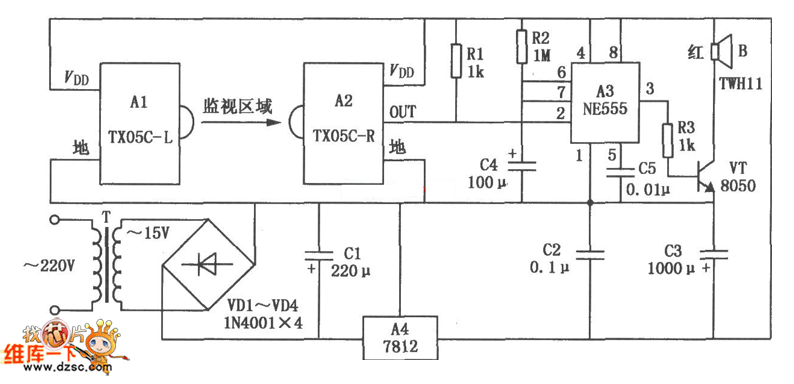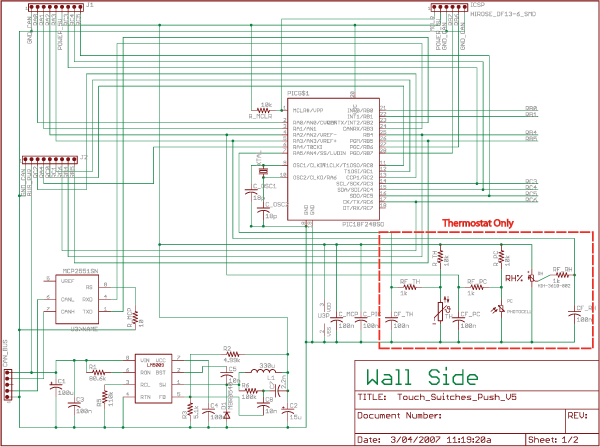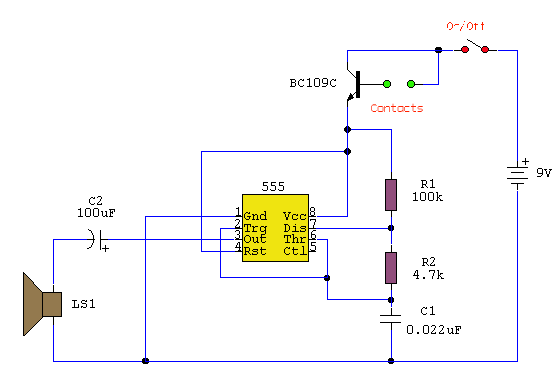
10 W AUTO ALARM SIREN
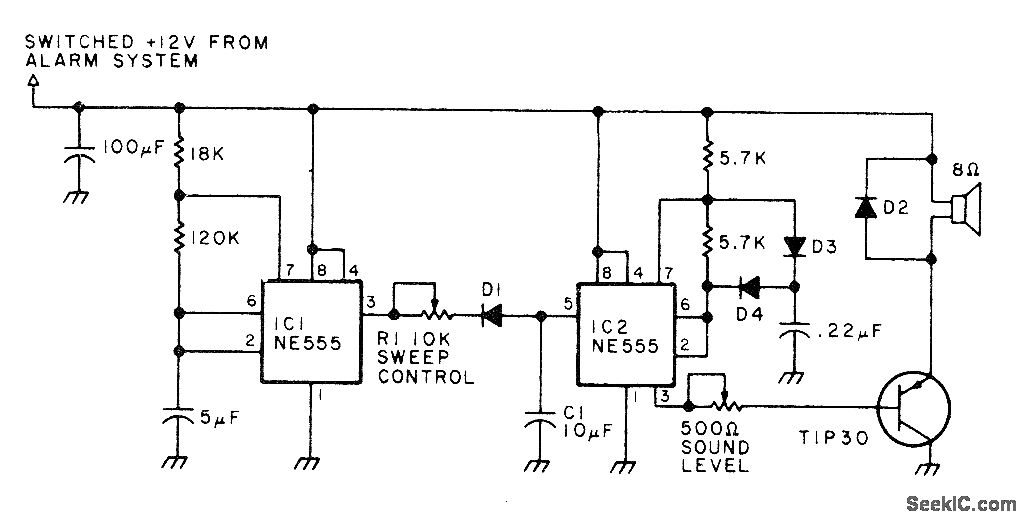
This circuit generates a high-intensity sound force field inside a vehicle, which is painful enough to deter a thief from entering the car after the alarm switch is triggered by opening the door. The circuit produces a square-wave output that varies in frequency. The modulation is achieved using a triangle waveform generated by components R1, D1, and C1. If a sweep-frequency siren is not permissible, C1 can be removed to create a legal two-tone sound. An efficient horn loudspeaker capable of handling up to 10W should be utilized. D2 is a silicon rectifier rated at 1 A with a peak inverse voltage (PIV) of 50. The other diodes used in the circuit are general-purpose silicon diodes.
The described circuit is designed to enhance vehicle security by creating an audible deterrent. The high-intensity sound is generated through a square-wave oscillator, which is modulated to produce a sweeping frequency effect. This modulation is essential for creating a disorienting sound field that can effectively discourage potential intruders.
The triangle waveform, produced by the resistor R1, diode D1, and capacitor C1, is crucial for the modulation process. This configuration allows for a gradual increase and decrease in frequency, resulting in a sound that can be both alarming and painful to the ears when experienced at close range. The removal of capacitor C1 would result in a more traditional two-tone siren sound, which may be more legally acceptable in certain jurisdictions.
The circuit's output is designed to drive a horn loudspeaker that is capable of handling up to 10 watts, ensuring that the sound produced is sufficiently loud to be effective in deterring theft. The choice of D2 as a silicon rectifier rated at 1 A and 50 PIV indicates a reliable component capable of handling the necessary current and voltage levels without failure. The use of general-purpose silicon diodes for other parts of the circuit further enhances reliability and performance.
Overall, this circuit design presents a practical solution for vehicle security by leveraging sound as a deterrent, utilizing well-established electronic components and configurations to achieve its intended purpose effectively.Generates force field of high-intensity sound inside car, painful enough to discourage thief from entering car after tripping alarm switch by opening door. Circuit produces square-wave output that sweeps up and down in frequency. Modulation is provided by triangle waveform generated by R1, D1, and C1. If sweep-frequency siren is prohibited, remove C1 to produce legal two-tone sound. Use efficient horn loudspeaker capable of handling up to 10W. D2 is silicon rectifier rated 1 A at 50 PIV. Other diodes are general-purpose silicon. -A. T. Roderick III, New Protection for Your Car, 73 Magazine, March 1978, p 76-77. 🔗 External reference
The described circuit is designed to enhance vehicle security by creating an audible deterrent. The high-intensity sound is generated through a square-wave oscillator, which is modulated to produce a sweeping frequency effect. This modulation is essential for creating a disorienting sound field that can effectively discourage potential intruders.
The triangle waveform, produced by the resistor R1, diode D1, and capacitor C1, is crucial for the modulation process. This configuration allows for a gradual increase and decrease in frequency, resulting in a sound that can be both alarming and painful to the ears when experienced at close range. The removal of capacitor C1 would result in a more traditional two-tone siren sound, which may be more legally acceptable in certain jurisdictions.
The circuit's output is designed to drive a horn loudspeaker that is capable of handling up to 10 watts, ensuring that the sound produced is sufficiently loud to be effective in deterring theft. The choice of D2 as a silicon rectifier rated at 1 A and 50 PIV indicates a reliable component capable of handling the necessary current and voltage levels without failure. The use of general-purpose silicon diodes for other parts of the circuit further enhances reliability and performance.
Overall, this circuit design presents a practical solution for vehicle security by leveraging sound as a deterrent, utilizing well-established electronic components and configurations to achieve its intended purpose effectively.Generates force field of high-intensity sound inside car, painful enough to discourage thief from entering car after tripping alarm switch by opening door. Circuit produces square-wave output that sweeps up and down in frequency. Modulation is provided by triangle waveform generated by R1, D1, and C1. If sweep-frequency siren is prohibited, remove C1 to produce legal two-tone sound. Use efficient horn loudspeaker capable of handling up to 10W. D2 is silicon rectifier rated 1 A at 50 PIV. Other diodes are general-purpose silicon. -A. T. Roderick III, New Protection for Your Car, 73 Magazine, March 1978, p 76-77. 🔗 External reference
